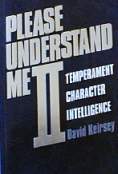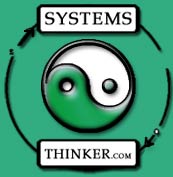MYERS-BRIGGS TYPE INDICATOR
The attitude that Jung identified deals with the direction in which an individual’s energy tends to flow. An individual may, on this measure, be an Introvert or an Extravert.
- Introverts (I), as described by Jung, tend to focus their energy inward.
- Extraverts (E), as described by Jung, tend to focus their energy outward into the world.
- The source from which a person tends to perceive information. An Individual may, on this measure, prefer Intuition or Sensing.
- Those who prefer Intuition (N) obtain their information primarily from within their own minds and imaginations.
- Those who prefer Sensing (S) obtain their information primarily from the external world.
- Those who prefer Intuition (N) obtain their information primarily from within their own minds and imaginations.
- Their preferred manner of making decisions. An individual, on this measure, may prefer Thinking or Feeling.
- Those that prefer Thinking (T) make decisions primarily rationally, consciously weighing the pros and cons of their options.
- Those that prefer Feeling (F) make decisions based primarily on their “gut” instinct.
- Those that prefer Thinking (T) make decisions primarily rationally, consciously weighing the pros and cons of their options.
The Development of the Myers-Briggs Type Indicator
That function was the degree to which an individual preferred structure in their lives. An individual may, they found, on this measure, prefer what they somewhat confusingly called Judging or Perceiving.
- Judging (J) individuals prefer their lives to be structured and planned.
- Perceiving (P) individuals prefer to remain open to new spontaneous possibilities.
Redefining Introversion and Extraversion
The 16 Myers-Briggs Types
Thus, the 16 possible types are:
| INTJ | ENTJ | INTP | ENTP |
| INFJ | ENFJ | INFP | ENFP |
| ISTJ | ESTJ | ISFJ | ESFJ |
| ISTP | ESTP | ISFP | ESFP |
For example, I am an INTJ.
I prefer:
- Introversion (I)- I am drained by prolonged external stimulation and must recharge in solitude.
- Intuition (N) - I perceive information primarily from within my own mind and imagination.
- Thinking (T) - I make decisions primarily by consciously weighing pros and cons.
- Judging (J) - I prefer my life to be structured and planned.
Preferences as a Spectrum
At times, a person may seem to prefer the two options on a given attitude or function relatively equally. For instance, I myself prefer Thinking and Feeling relatively closely and make decisions based on gut instinct almost as often as I make them on consciously weighed pros and cons. In such cases, we use an X to notate the relatively equal preference on that particular attitude or function. For instance, if my T and F were both preferred 50%, then I might be described as an INXJ, rather than either an INTJ or INFJ.
The Four Myers-Briggs Groups
These groups, described very basically, are:
| Group Name | Members' Shared Preferences | Types Included | Strengths | Highest Value(s) |
|---|---|---|---|---|
| Rationals | NT | INTJ ENTJ INTP ENTP |
Logic and strategy | Truth, knowledge, competence and autonomy |
| Idealists | NF | INFJ, ENFJ INFP ENFP |
Diplomacy and creating harmony among people | Principles, meaning and relationships |
| Guardians | SJ | ISTJ ESTJ ISFJ ESFJ |
Logistics and materials | Security and being respected within their communities |
| Artisans | SP | ISTP ESTP ISFP ESFP |
Tactical actions and adaptability | Sensually stimulating experiences |
MBTI Dynamics
“True” vs. “Reactive” Type
I have long noticed that among individuals of a given MBTI type, some seem “comfortable in their skin” living as that type, while others seem unfulfilled and somewhat unnatural in their expression of that particular type. In some cases, this may simply be a function of a difference in maturity level between the two individuals. However, in at least a certain number of other cases, I have theorized that this difference may stem from the fact that the more comfortable individuals were encouraged and able to develop in a manner consistent with their innate tendencies, whereas the less comfortable individuals were encouraged or forced by a family or society marked by a conflicting value system to stifle their natural tendencies and/or to increasingly express tendencies that are not their preferred ones.For instance, we might imagine two individuals that are both born with the innate tendency to develop into ESFP’s. One individual is born into a family and culture that greatly enjoy the natural exuberance of the ESFP and is rewarded for the resulting spontaneous, energetic behavior. The other is born into a family or culture where the ESFP’s impulsivity is frowned upon and, shamed for his or her natural tendencies, grows more introverted, vigilant and conformist, gradually assuming the outward expression of an ISTJ in reaction to his or her environment.
Years later, though the “true” type of both individuals is ESFP, only the first individual would comfortably express this type, while the other might be described as a “reactive ISTJ” who is plagued by the dissonance between the habitual ISTJ behavior that has evolved as a result of defense mechanisms and the “true” ESFP tendencies that are constantly being repressed. The insecurity of this “reactive ISTJ” would stand in stark contrast to the confident bearing of a mature “true ISTJ” who developed into that type in keeping with their inborn tendencies, rather than as a result of profound compromises and the formation of a “false self” perceived as necessary to survive in an unaccepting environment.
Such an outcome could just as easily happen in reverse. A "true ISTJ" born into a family or culture more accepting of ESFP's could well become a "reactive ESFP." Ultimately, in theory, any type may, when subject to particular pressures, be pushed, at the cost of authenticity, into expressing itself as any other type. However, it is possible that the likelihood of a person taking on an unnatural "reactive" type depends on just how strong their original innate tendencies are. Perhaps a person who prefers Introversion by a 90% to 10% margin over Extraversion, or vice-versa, would be far less likely, despite even intense pressure, to take on a persona featuring the opposite preference on that attitude, as compared to someone whose preference is by a margin of only 55%-45%. At the same time, it would stand to reason that when a person compromises a very strong innate tendency, they may pay an even greater emotional price, in proportion to the larger distance between their true and false selves, for doing so than would someone who compromises a relatively weaker innate tendency.
This theory is not an official part of the MBTI doctrine, but simply my own hypothesis. In this view, those living out “reactive” types will, if they are to heal and regain contact with the true Self, need to dissolve their defense mechanisms, transcend the fear, guilt and shame associated with the innate preferences which have been relegated to the Shadow and reintegrate them into their personalities.
Integration of Less Preferred Functions
An individual’s particular MBTI type describes those attitudes and functions that come most naturally to them. However, most MBTI practitioners do not view us as static creatures. Like Carl Jung, whose work ultimately aimed at fostering greater wholeness and identification with our larger Self, they have developed theories within the model that address the course of development over the lifespan. In particular, they have identified common patterns in when, at strategic points in our lives, our less preferred or “auxiliary,” “tertiary,” and “inferior” functions are likely to rise to the surface and become more integrated into our expanding sense of Self. Being aware of these developmental patterns for our personality type can help guide us on our path toward greater wholeness.Applications of the Myers-Briggs Type Indicator
Myers-Briggs Type Indicator vs. The Enneagram
As we have seen, the MBTI categorizes individuals based on how they process energy and information, make decisions and structure their lives. This makes it very useful for certain applications, such as informing career choices or particular areas of relationship dynamics.
The Enneagram, on the other hand, defines its 9 types based on people’s somewhat deeper motivations, wounds and defense mechanisms. As I describe in my post “The Enneagram: A More Complete, Precise, Dynamic System for Optimizing Personal Development, Relationships and Human Systems than the Myers-Briggs Type Indicator”, I believe that the Enneagram’s central criteria for categorization and more precise explanation of dynamics makes it an ultimately more useful system than the MBTI for understanding our deeper drives and our paths toward wholeness in human systems.
In the end, both systems offer tremendously important information and are extremely valuable when used in the areas in which they are each most appropriate and effective.
Learn Much More about the MBTI
The MBTI-related book that I most recommend is:
 |
Please Understand Me II: Temperament, Character, Intelligence by David Keirsey - Incredible book giving a complete history of personality typing, describing in detail the personality profile and characteristics of all of the types, as well as how they fare in various careers, and how they interact in terms of mating, parenting, etc. Also includes a personality test in the book. |

|
You can also learn more about the system at:
- My Personality Types Page – Here I describe how I first learned about the MBTI, provide more detailed descriptions of the system and my type, and offer many links to resources where you can determine your own MBTI type and read about all of the types and applications of the system.
- All of my Blog Posts tagged Myers-Briggs Type Indicator
- CPP, Inc. - Official publisher of the Myers-Briggs Type Indicator Assessment.
- The Myers & Briggs Foundation - Organization created to “continue the pioneering work of Katharine Cook Briggs and Isabel Briggs Myers in the field of psychological type, especially the ethical and accurate use of the Myers-Briggs Type Indicator instrument.” See their MBTI Basics page for a nice overview.
If you found this page helpful, then:
Subscribe to My Free Newsletter
Get bonus content full of ideas to help you develop
greater understanding and insight in many areas of life.
OR
Main Interests Page

